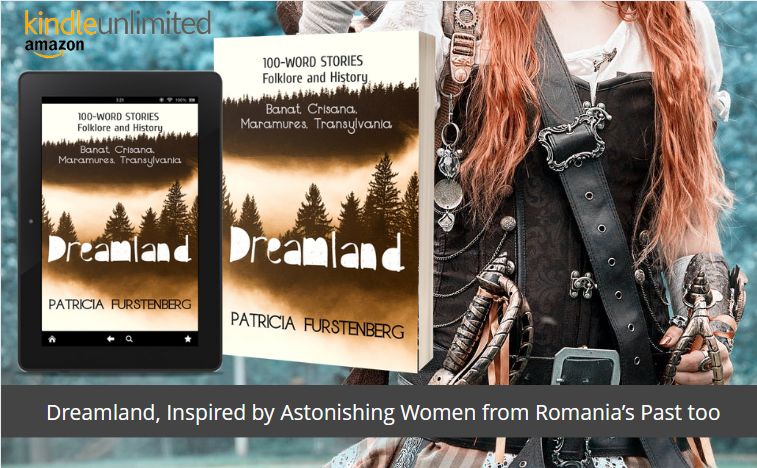When did geometry became art, seeping in everyday Romanian folk creations is a question as old as the cave art of Paleolithic Transylvania, and as old as the first human glimpse of the stars, the flowers, and the rivers. Art is life that’s been lived.
Perhaps the first designs were made with the sharp edge of a rock onto wood. Lines to mimic the horizon and the magic that sunrise was each morning. Curved lines like the meanders of a river. Dots like the pattern of rain. Dots, lines, triangles, diamonds, circles, spirals… this geometry forms the motifs known as art, that adorn Romanian folk creations.
The dot, at the center or a part of a design

Blue dots

Dots and lines on Romanian folk pottery:

The straight line, infinity, vertical as a connection with heavens; horizontal as a new path, the future, with whatever it may hold. The straight line can form a cross, and stars too.
Stars connect humans with heaven, brought them closer to divinity, meant to help them find the right path.

The zigzag line and the wavy line on the Romanian blouse, ia:

From lines to triangles…
Cucuteni culture, as old as the Neolithic era:


The triangle – three lines, connected with holy trinity, Father, Son, and Holy Ghost. For this reason, the equilateral triangle represents Divinity, harmony and proportions.
The triangle pointing up represents the man, and pointing down it represents the woman.
More lines, forming the rhombus and the square on house from Tulcea:

The half-circle and the spiral on the Horezu rooster, Romanian hand-made pottery. Spyral and snail (concentric circle) are symbols of fertility and evolution, as well as the earth’s revolution around the sun.

The rooster was also meant to chase way bad spirits, protect against bad luck.
Wavy lines in the appearance of the rope, good joined with evil, life with death, light with darkness. It shows the pagan origin of the Romanians, who converted to Christianity mostly between the I – III AD.
The famous bronze from Biertan, Sibiu, with its Latin inscription ‘Ego. Zenovius, votum posui’ (translating to ‘I Zenovius, do swear’ or ‘I, Zenovius, offered this gift’) – IIAD.

Sun and rope motifs on a traditional Maramures Gate, carved in wood:

Stars, rope, triangles forming a sun:

Line and circles, the sun appears very often represented on a cross, symbolizing God. The sun was also worshiped by the first humans as life-giving source.

Circle means regeneration, the wheel of time, the change of seasons. The circle, as a symbol, would grant strength and wisdom.
Triangles upon triangles, the Infinity Column, a pure repetition of the seam symbol, the “bead”, the image of a rosary strung on an invisible thread, towards heaven, in a mystifying, silent meditation:

Dots, straight lines, wavy ones, full circles. The A,B,C of art. Plain and simple, almost dull, then what is it that, when used, they create meaningful work?
It must be the artist’s hand, don’t you think? His eye, the passion pouring through his veins, the same passion that connects him with his ancestors and fuels him with inspiration – like an invisible umbilical chord. We don’t live in a vacuum; what we know, who we are is rooted, fueled by our past and by our ancestor’s lives, their knowledge, their experiences; and who we are it’s constantly influenced by our encounters, our endurance, our occurrences, our adventures, even our boredom.
Because art, art is life that’s been lived, before anything else.


Wow. Very beautiful❤❤❤❤.
Thank you, Aparna 🙂
I love this topic, and the way you handled it. We find some similar patterns in Native American art, and it’s interesting to thing that the motivation and origin may be the same.
I thought you would, Dan. 🙂
Isn’t this an incredible thought, how humankind shared yet another common denominator, even thousands of miles apart 🙂
Wonderful photographs. Thank you for doing all detail in this.
Thank you so much, Danny.
Somehow I can’t seem to escape detailed work. 🙂
This is so filled with historical goodies! Such beautiful folk art.❤️
A treasure chest. 🙂
Thank you, Susan.
Wow, it was good seeing you appear on TV! Your life is full of great achievements! I loved hearing you speak Romanian.
I suppose symmetry and design are ingrained in the human psyche and when art reflects these basic traits, the eye can only see beauty. Lovely photos with wonderful explanations. 🙂
Such an interesting post Patricia! It´s amazing how many geometric shapes inspire arts and decoration creating so many beautiful shapes and patterns. Thank you so much for sharing!
Such a great pleasure, Blanca, as always when I share something about Romania’s culture 🙂 And I know just how much you enjoyed it, with your eye for art and detail 🙂
Thank you!